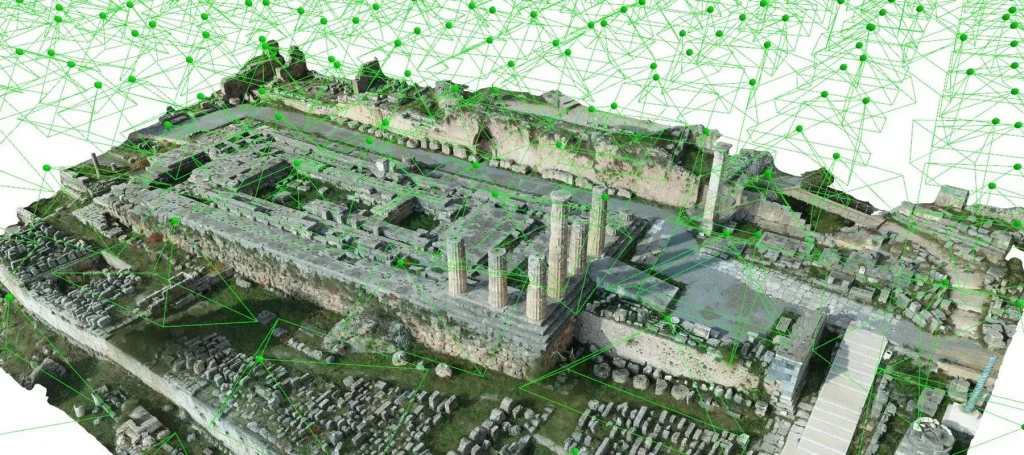Building Information Modeling (BIM) has revolutionized the architecture, engineering, and construction (AEC) industries. By providing a comprehensive digital representation of structures. BIM scans, or 3D scans, play a pivotal role in creating accurate and detailed BIM models. These scans are captured using various technologies, each with its unique set of advantages and applications. In addition, in this blog, we’ll delve into the different types of BIM scans, including laser scanning and photogrammetry, and explore their applications in the AEC industry.
Laser Scanning
Laser scanning, often referred to as LiDAR (Light Detection and Ranging), is a highly popular technology in the world of BIM. Also, It works by emitting laser pulses and measuring the time it takes for them to bounce back from objects. So, these data points create precise 3D point clouds of the scanned environment. Here are some applications of laser scanning in BIM:
a. As-Built Surveys: Laser scanning is widely used to create accurate as-built models of existing structures, ensuring that new designs and renovations are compatible with the existing conditions.
b. Clash Detection: It aids in identifying clashes and interferences in a project by overlaying the scanned point cloud with the BIM model.
c. Historic Preservation: For the restoration and preservation of historical buildings, laser scanning helps create detailed 3D models while preserving the original structure.
d. Construction Quality Control: During construction, laser scanning can be used to ensure that built elements match the BIM model, helping maintain quality control.
e. Infrastructure Monitoring: It is used for monitoring bridges, tunnels, and other infrastructure to identify structural changes over time.
Photogrammetry
Secondly, Photogrammetry is the process of extracting 3D information from 2D images. By taking multiple overlapping photographs from different angles, software can triangulate the position and depth of objects, creating a 3D model. Photogrammetry is advantageous in the following applications:
a. Aerial Surveys: Aerial photogrammetry is used to create 3D models of large areas, such as topographic maps or urban planning.
b. Facade Modeling: Photogrammetry is ideal for creating detailed facade models, capturing intricate architectural details.
c. Cultural Heritage Documentation: Preserving cultural heritage sites and artifacts is made easier with photogrammetry, as it can create highly detailed 3D representations.
d. Interior Scanning: While laser scanning may struggle with small or tight spaces, photogrammetry excels in capturing the interiors of buildings.
e. Site Analysis: Photogrammetry can be used for site analysis and planning, providing accurate 3D context for construction and development projects.

Structured Light Scanning
Structured light scanning uses a projector to cast patterns of light onto an object or environment and then captures the deformation of these patterns. Furthermore, this technique is useful for applications like:
a. Quality Control: Structured light scanning can be used in manufacturing to inspect and ensure the quality of products.
b. Reverse Engineering: It aids in creating 3D models of objects for reverse engineering purposes, especially in industrial design and product development.
c. Architectural Detailing: So, for intricate architectural details, structured light scanning can provide highly accurate representations.
d. Art and Sculpture Replication: This technology is used to reproduce artwork and sculptures with precision.
Mobile Scanning
Mobile scanning involves the use of vehicles equipped with scanning technology to capture 3D data while moving. It is useful in the following scenarios:
a. Road and Infrastructure Surveys: Mobile scanning is commonly used to survey roads, bridges, and other transportation infrastructure to assess their condition and plan maintenance.
b. Smart Cities: This technology plays a vital role in creating 3D models of urban environments, which is essential for smart city development.
c. Large-Scale Projects: Mobile scanning is ideal for capturing data across vast project sites, such as airports, industrial complexes, or large commercial developments.
Conclusion
So, BIM scans are indispensable in the AEC industry, providing accurate, detailed, and efficient ways to represent physical structures digitally. The choice of scanning technology depends on the specific project requirements. Whether it’s for construction, heritage preservation, quality control, or urban planning. By understanding the various types of BIM scans and their applications, professionals in the field can make informed decisions to optimize their projects and streamline their workflows. Finally, as technology continues to evolve, the integration of BIM scans will only become more essential in shaping the future of the construction and design industries.





